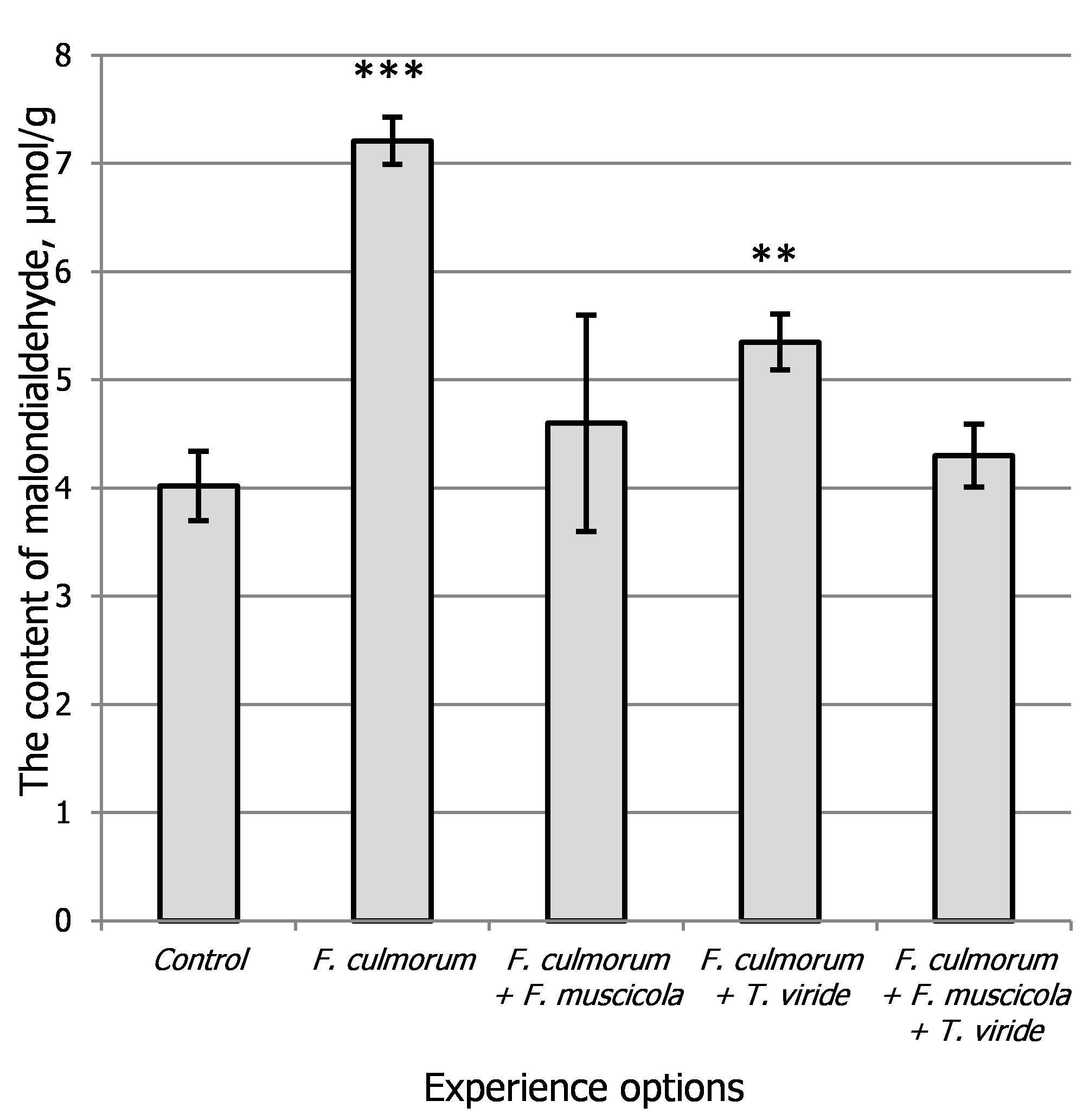
Influence of the micromycete Fusarium culmorum and its antagonists on the state of the antioxidant system of Melissa officinalis L.
Abstract
Keywords
Full Text:
PDFReferences
Sambukova TV, Ovchinnikov BV, Ganapolsky VP, Yatmanov AN, Shabanov PD. Prospects for Phytopreparations (Botanicals) use in Modern Pharmacology. Rev Clin Pharmacol Drug Ther. 2017;15(2);56–63. doi:10.17816/RCF15256-63
Vishnyakova SV, Zhukova MV. Medicinal and essential oil plants Ekaterinburg: Ural State Forestry Engineering University, 2017. 41 p. (in Russian). https://core.ac.uk/download/pdf/84828899.pdf
Adamczyk-Szabela D, Lisowska K, Romanowska-Duda Z, Wolf WM. Combined cadmium-zinc interactions alter manganese, lead, copper uptake by Melissa officinalis. Sci Rep. 2020;10:1675. doi:10.1038/s41598-020-58491-9
Domracheva LI, Fokina AI, Skugoreva SG, Ashikhmina TYa. Two sides of soil fungi of the genus Fusarium and their metabolites: danger to biota and the possibility of use in biotechnology (review). Theor Appl Ecol. 2021;1:6–12 (in Russian). doi:10.25750/1995-4301-2021-1-006-015
Domracheva LI, Skugoreva SG, Korotkikh AI, Zabubenina YuS, Trefilova LV, Kovina AL, Domnina EA, Timonov AS. Growth and development of Lupine angustifolia L. in the presence of lichen biota. Theor Appl Ecol. 2021;2:183–188 (in Russian). doi:10.25750/1995-4301-2021-2-183-188
Kolupaev YuE, Karpets YuV. Reactive oxygen species and stress signaling in plants. Ukr Biochem J. 2014;86(4):18–35 (in Rus-sian).
Pyatigin SS. Stress in the plants: physiological approach. J Gen Biol. 2008;69(4):294–298 (in Russian).
Golovanova TI, Dolinskaya YeV, Sichkaruk YeA. Trichoderma fungi role in wheat and barley productivity increase. Bull KrasGAU. 2009;7:102–107 (in Russian).
Domracheva LI, Kondakova LV, Popov LB, Zykova YuN. Biore-mediation capabilities of soil cyanobacteria (review). Theor Appl Ecol. 2009;1:8–17 (in Russian). doi:10.25750/1995-4301-2009-1-008-017
Fokina AI, Skugoreva SG, Domracheva LI, Kovina AL. Antago-nistic and sorption activity of mono-, binary, and three-species biofilms of soil cyanobacteria. Theor Appl Ecol. 2020;3:119–125 (in Russian). doi:10.25750/1995-4301-2020-3-119-125
Zagoskin MA, Gushchina PI, Blagodatskikh YaYu, Ogorodnikova SYu. Influence of the micromycete of the genus Fusarium on the biochemical parameters of lemon balm. In: Materials of the XVIII All-Russian scientific-practical conference with international participation Biodiagnostics of the state of natural and natural-technogenic systems, 2020, Nov. 16-18, Kirov, Russian, p. 244–246 (in Russian). http://envjournal.ru/ecolab/sbor/2022.pdf
Michailova ID, Lukatkin AS Lipid Peroxidation in Cucumber and Radish Seedlings Affected by Heavy Metals. Izvestiya Saratov Univ Chem Biol Ecol. 2016;16(2):206–210 (in Russian). doi:10.18500/1816-9775-2016-16-2-206-210
Svistova ID, Kuvshinova NM, Stekolnikov KE, Nazarenko NN. Medicinal herbs as phyto-reclamation agents on leached chernozem. Belgorod State Univ Sci Bull Nat Sci. 2016;4:32–38 (in Russian). http://dspace.bsu.edu.ru/bitstream/123456789/34109/1/Svistova_Lekarstvennye.pdf
Grebennikova OA, Paliy AE, Logvinenko LA. Biologically active substances of lemon balm. Scientific Notes of Taurida V.I. Ver-nadsky Nat Univ Ser Biol Сhem. 2013;26(1):43–50 (in Russian). https://elibrary.ru/download/elibrary_25135527_71369302.pdf
Blinova AA, Volchkova OO, Ivachenko LE. Effect of temperature stress on antioxidant system substances in soybean sprouts of Lidiya. In: Current problems of biological and chemical ecology, Proceedings of the VI International Scientific and Practical Conference. Moscow: Moscow State Regional University, 2019, Febr. 26–28, pp. 223–226 (in Russian). https://elibrary.ru/download/elibrary_37276206_29674813.pdf
DOI: https://doi.org/10.15826/chimtech.2022.9.2.S5
Copyright (c) 2022 Svetlana Skugoreva, Polina Gushchina, Yana Sharipova, Larisa Darovskikh

This work is licensed under a Creative Commons Attribution 4.0 International License.
Chimica Techno Acta, 2014–2025
eISSN 2411-1414
Copyright Notice







